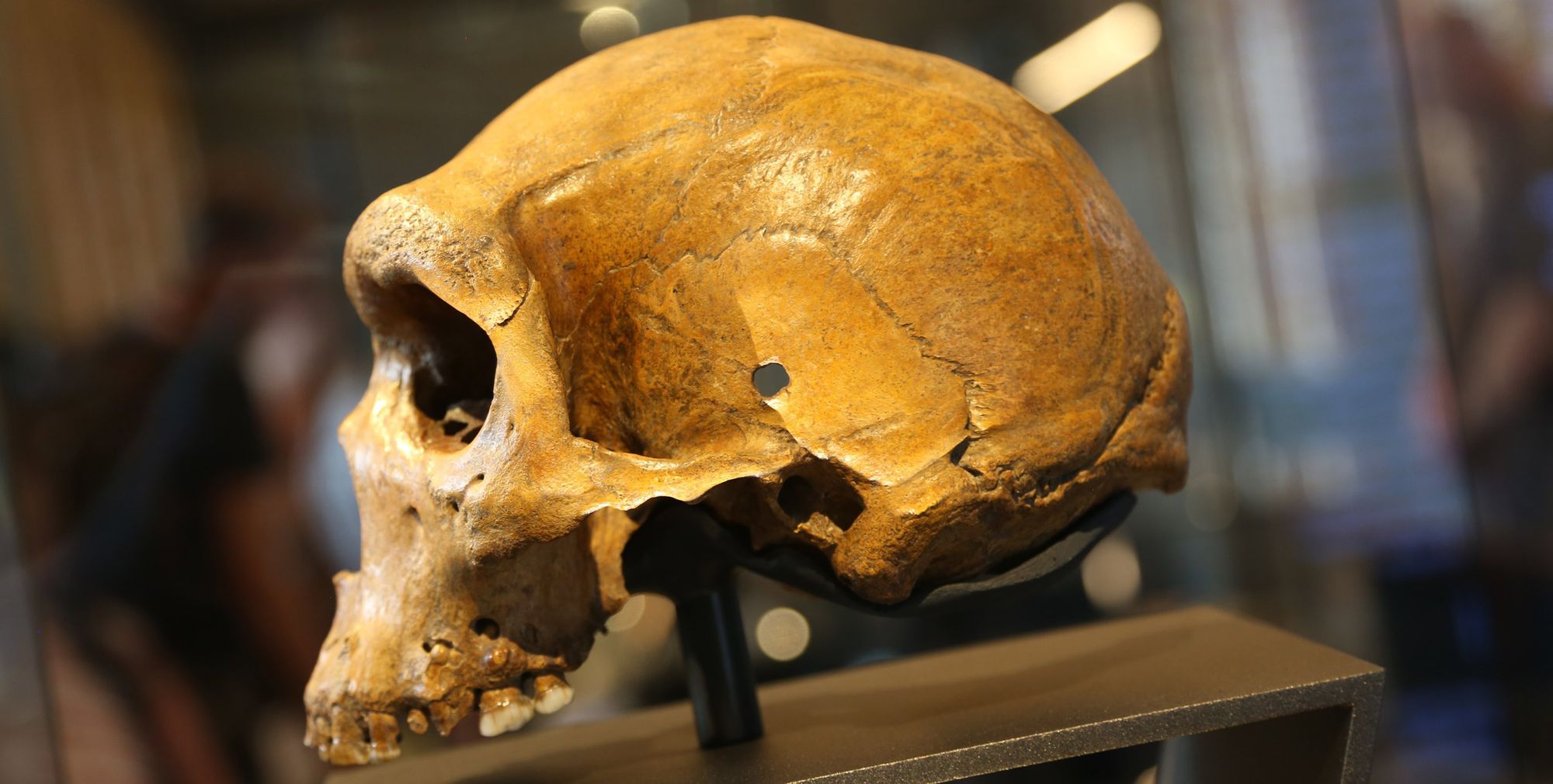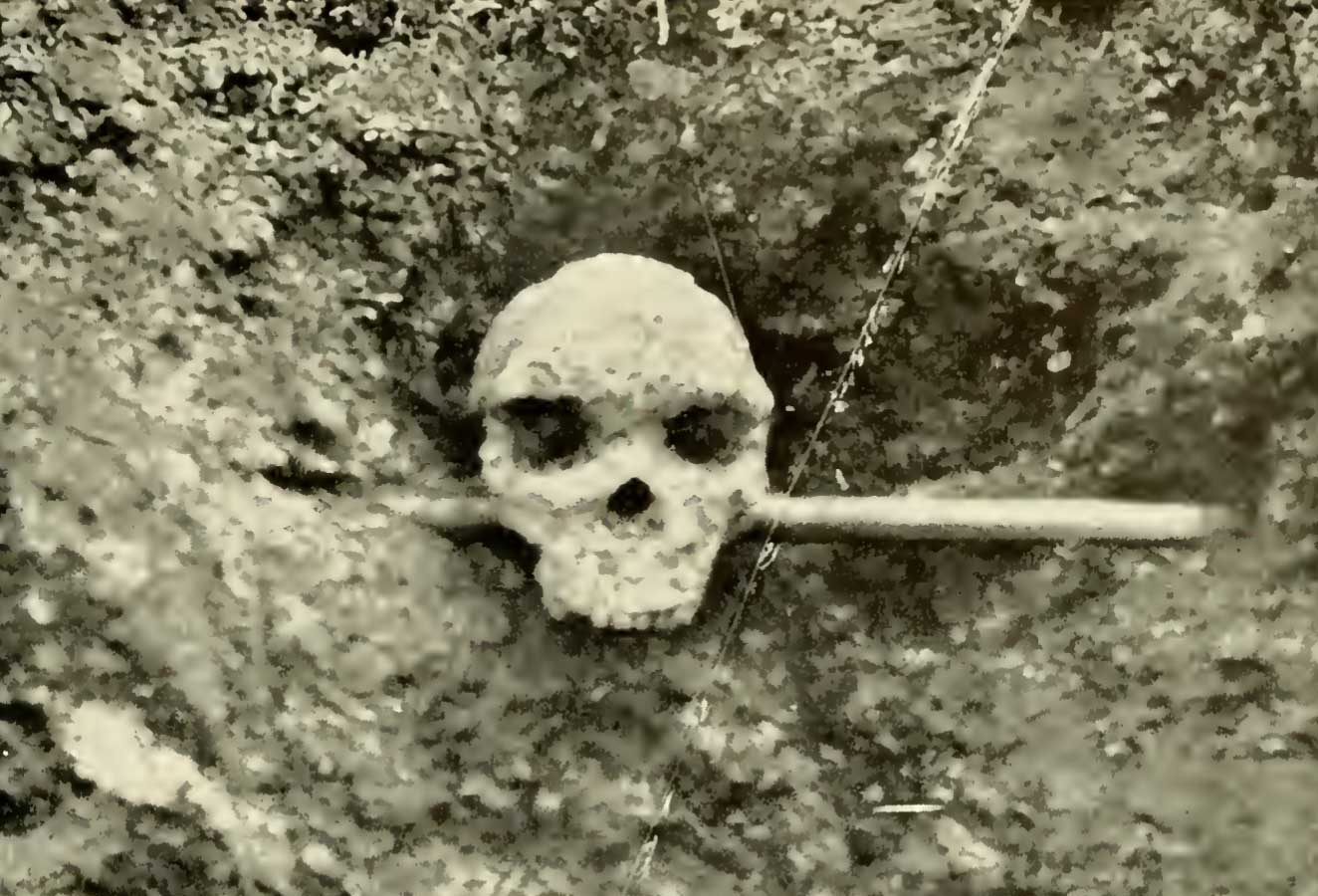Kabwe: A famous fossil unearthed amid the human costs of mining

Many ancient fossil sites are in urban landscapes where they have been affected by development. None are as heartbreaking as the site at Kabwe, Zambia, where an ancient human skull was uncovered by miners in 1921. Nothing is left today of the ancient “Bone Cave” from which the skull and other remains were dug, or indeed of the small hill, or kopje, that contained the cave. By the time of the skull's discovery the site was already on the way to obliteration, the center of a rapidly growing industrial mine and surrounding town. Over a century, contamination from the mine has harmed hundreds of thousands of people. Amid such human tragedy, fossils fade in importance.
The skull nonetheless shaped the history of paleoanthropology. It was the first representative of an extinct human relative to be recognized in Africa. The find would set the stage for a series of discoveries from the continent during the 1920s through the 1950s. Yet the circumstances of its discovery meant that important details that would help establish the skull's relationship to other fossils, its culture, and its age were lost.
During the last decade scientists have been working to reconstruct some of these lost details. Some are taking a renewed look at the history of the skull and its classification, while others have done what is possible to evaluate the true antiquity of the fossil. Meanwhile, international attention has focused on the mining legacy and its environmental and human costs.
Two men brought the skull to light in June, 1921, as they worked the mine face: one was a Black mine worker, the other a Swiss national named Tom Zwigelaar. Rich ore surrounded it. Beneath the skull, miners soon uncovered a “bundle which looked like a flattened roll of hide”. This bundle, apparently composed of mineral ore, went into the smelter. Zwigelaar took the skull to the mine manager, who put it in the care of the company physician.

A few months after its discovery, the company general manager Ross Macartney brought the skull to Great Britain where he presented it to the British Museum (Natural History) for study. With it he brought other bones of humans and other animals. Some of these bones were found after the skull in the same general area and others came from different parts of the mine.
Arthur Smith Woodward, curator of the Geology department of the museum, swiftly published his opinion that the skull and bones represented a new form of human, a parallel to Neandertals. He created the name Homo rhodesiensis. Along with his article in the journal Nature, Smith Woodward prepared a special report for the Illustrated London News, a popular magazine that featured foreign events and society happenings. The coverage and pictures made the skull a celebrity, but also spread many misconceptions. Woodward labored under the mistaken assumption that the human bones were discovered together; indeed his descriptions provide no sign of knowledge of the circumstances of the find. He misattributed the discovery of the skull to the mine captain, W. E. Barron.
We would be unable to tell any of the real story of the discovery without the efforts of Aleš Hrdlička, who visited the Broken Hill mine four years afterward. Hrdlička was the Czech-American curator of physical anthropology at the U.S. National Museum, and in 1925 he was on an international tour to see ancient skeletal remains and sites. After arriving at the Broken Hill mine, Hrdlička interviewed the staff and found that the information about the skull's discovery reported to the public had been almost entirely wrong. Hrdlička described his findings within his 1930 book, The Skeletal Remains of Ancient Man, bringing to light Zwigelaar's role and dispelling some misconceptions about the skull's context. Both Zwigelaar and Barron attested the involvement of the Black worker in the discovery, but neither of them shared the man's name. He remains unknown today.
Many other questions also remain unanswered. Most central is the nature of the Bone Cave. A geologist noted the occurrence of distinctive minerals in the cave as early as 1907, and Franklin White reported collections of animal bones and stone artifacts the following year, also noting a second fissure with infill. The miners dug several tunnels into the kopje to probe the course of the cave and occurrence of ore-bearing rock. Unlike many mines where the cave infills were dumped aside, here the sediments and bones themselves were permeated with zinc and lead, so instead of avoiding them the miners smelted them with the rest. By 1921, mining had reached the deepest Bone Cave sediments, some 30 meters below the original level of the ground surrounding the kopje. Nearly all the information that might have established the skull's context was long gone.
Today the mine and surrounding city are known as Kabwe, as they have been since shortly after Zambia became independent in 1964. The name “Kabwe” refers to ore, and people in the region had mined the ore long before the industrial mine was established in 1904. The name “Broken Hill” had been given by Thomas Garfield Davey, the prospector who identified outcrops of lead, zinc, and vanadium ore that had mineral content resembling a similar formation in Australia, which is called Broken Hill to this day. Mining at Broken Hill was carried out by an operation called the Rhodesian Broken Hill Development Company, which was formed to capitalize on prospecting rights assigned by the British South Africa Company, the creation of Cecil Rhodes. The lead and zinc deposits would help to fund railroad construction into Northern Rhodesia and northward to the copper mines of Katanga, then claimed by Belgium.
During the 1920s, the South Africa-based Anglo-American Corporation bought the Broken Hill Mine, operating it until 1973 when the Zambian government nationalized the operation. In 1994 the mine closed, leaving disused industrial buildings and enormous spoil heaps where informal miners still extract small amounts of lead from the tailings. Mountains of tailings and slag from nine decades make this one of the most polluted industrial sites in the world. More than 250,000 people in and around Kabwe have been exposed to lead many times greater than government limits.
The legacy of pollution from mining has drawn increased attention within Zambia and internationally since a 2006 report included Kabwe as one of the 10 most polluted cities on Earth. An article by Damian Carrington in The Guardian summarizes the environmental damage from the mining history: The world's most toxic town: the terrible legacy of Zambia's lead mines.
The blood levels of lead in children in Kabwe are also known to be very high - a recent study revealed that every one of 246 children tested were above the safety limit of 5 micrograms per decilitre of blood. The vast majority were over 45 micrograms per decilitre, which causes brain, liver and hearing damage, and eight were over 150 micrograms per decilitre, at which point death is the likely outcome.
The photos in this article were taken by Pulitzer-winning photographer Larry C. Price, and more of his powerful images from Kabwe are featured on the Pulitzer Center's website: Subsistence Mining at Kabwe's Black Mountain.
The American geographer Hillary Waters talked with residents of Kabwe, doctors, former industry officials, and other experts to better understand why so little had been done since the mine closure to remediate the lead contamination. Her interviews in 2016 and 2017 found that industry, health care, and government actors all had chosen to talk about lead contamination in ways that emphasize “natural” occurrence of lead, deflecting reponsibility from industry and government.
“Government health clinics and NGOs hold educational campaigns with residents focusing on everyday actions and personal hygiene. This allows educators to acknowledge lead poisoning and talk about contamination pathways without discussing liability”—Hillary Waters
Instead of relocating residents, government and other institutions have sent the message that individual households should try to suppress dust and keep children from playing on contaminated soil. Waters notes that the geography of Kabwe itself was a result of company planning, with townships for Black mine workers placed downwind of the smelter and next to the tailings dumps. She recounts that during the 1980s, under government administration, lead smelting continued without adequate air filtering equipment, and blood lead levels of children were kept secret from families. Waters reports that the individual efforts, such as spraying water to suppress dust, are prohibitively expensive for families in poverty-stricken neighborhoods, while the efforts undertaken by international NGOs tend to divide the communities by selecting a few individual properties for remediation.
In 2020, a group of women from Kabwe initiated a lawsuit against Anglo-American to recover compensation for lead poisoning from the years when the company operated the mine. A South African court will decide whether the case can be treated as a class action. If so, more than a hundred thousand women and children who have been affected in and around Kabwe may be affected by the suit. This lawsuit is the first major effort to seek damages from industry for the overall contamination from mining at Kabwe. Still, the case will likely take many years to reach a conclusion. And whatever happens with the lawsuit, the contamination at Kabwe will remain.
Notes: This is the first of two posts about the Kabwe legacy. In the second post, I'll look at the latest science on the age of the remains and the debate about the name Homo rhodesiensis, as well as Zambia's quest to recover the skull from the U.K.
The history of mining during the early years of the Broken Hill Mine has been written by Buzandi Mufinda in a 2015 thesis, A History of Mining in Broken Hill (Kabwe): 1902–1929.
In 2019, Michael Balter wrote about the history of the Kabwe discovery and the ongoing efforts by Zambia to repatriate the remains in a feature article for Sapiens: Will the Iconic Skull of an Ancient Human Return to Zambia?
In a 2020 scientific article, Rainer Grün and coworkers evaluated evidence about the age of the Kabwe fossils. This paper includes a supplement with a clear discussion about the documentary evidence surrounding the discovery and the “Bone Cave”.
Waters' 2019 article has in-depth material about the history of mining and pollution at the Kabwe site. Her interviews and focus groups provide deep perspective on the human dimensions of a continuing tragedy.
Last year, the non-governmental organization Human Rights Watch submitted a report to the United Nations' Committee on the Rights of the Child to heighten awareness of the continuing problems at Kabwe. The committee was expected to examine the issues in May, 2022.
References
Hrdlička, Aleš. 1930. The Skeletal Remains of Early Man. Smithsonian Miscellaneous Editions, vol. 83.
Mufinda, Buzandi. 2015. A History of Mining in Broken Hill (Kabwe): 1902-1929. M.A. Thesis, University of the Free State.
Swerling, Gabriella. 2020. Zambian women take on lead mining giant in court. The Daily Telegraph (UK) October 22, 2020, p. 16.
Waters, Hillary. 2019. The biopower of ignorance: Individualizing blame for lead poisoning in Kabwe, Zambia. Environment and Planning E: Nature and Space 2(2): 390–408. https://doi.org/10.1177/2514848619840261
White, Franklin. 1908. Notes on a cave containing fossilized bones of animals, worked pieces of bone, stone implements, and quartzite pebbles, found in a kopje or small hill composed of zinc and lead ores, at Broken Hill, North-Western Rhodesia. Proceedings of the Rhodesia Scientific Association 8: 13-23.
Woodward, Arthur Smith. 1921. A new cave man from Rhodesia, South Africa. Nature 108(2716): 371–372. https://doi.org/10.1038/108371a0
